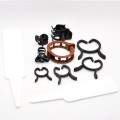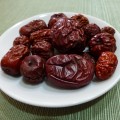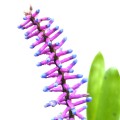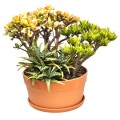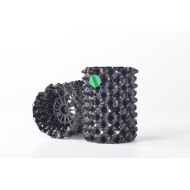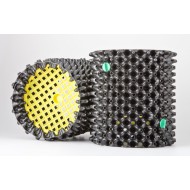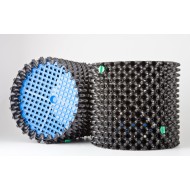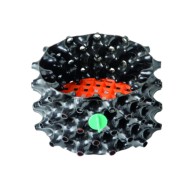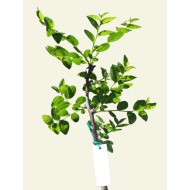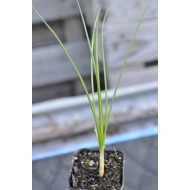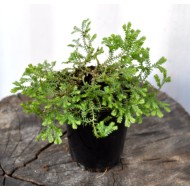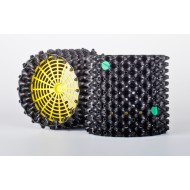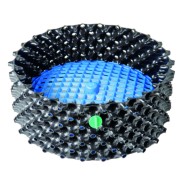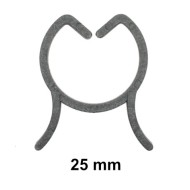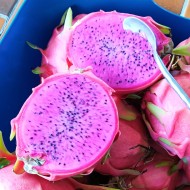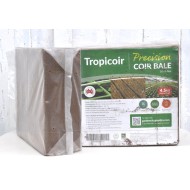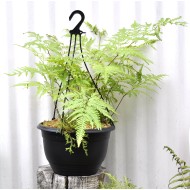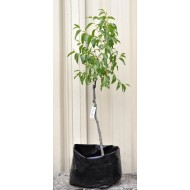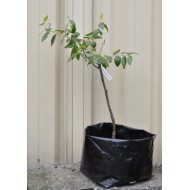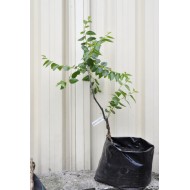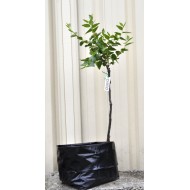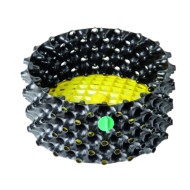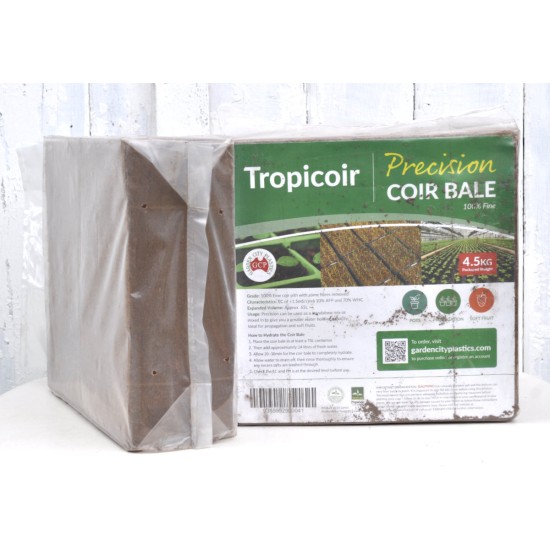
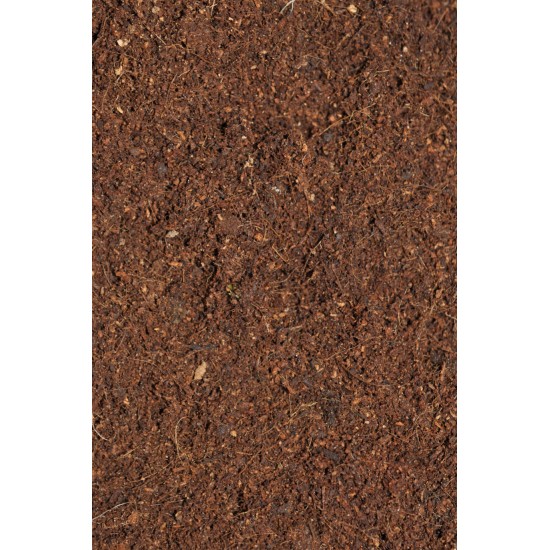


- Stock: In Stock
- Model: fine-peat-coir-bale
- Description
- Air-Pot® Shipping
- Pick-Up Info
- Anchoring Points Galore!
- How Roots Are Air-Pruned
- Videos
- Reviews
Coir peat is the finest coir, and comes in two grades. This ‘Precision’ grade is the pith without fibres. It is a wonderfully friable product when hydrated, and my go-to when I need coir in bulk, which is often.
The other fine grade is ‘Classic’, which is the same wonderfully friable pith but with the fibres. It is available here as a really handy small brick size, which makes about 9 L when hydrated. I use this often myself when I just need a small amount of coir to pack an Air-Pot with.
Supplier-stated specs:
Grade: fine (pith with fibres)
pH*: 5.5 to 7.0
Electrical Conductivity (EC)*: 0.1 to 1.5 mS/cm (c.f. typical drinking water range of 0.2 to 0.8 mS/cm)
Reconstituted volume: about 14 litres per kilogram
*Coir is naturally high in salts and these desirable pH and EC values are the result of treatment during processing.
Coir has excellent water- and nutrient-retaining properties, and these together with the slightly acidic to neutral pH and low EC make fine peat coir an excellent medium for augmenting existing potting mixes, or to make your own.
I use this grade for seed-raising, propagating cuttings, and to mix with compost for packing Air-Pot containers.
This fine coir packs into the Air-Pot cones more tightly than coarser grades, which enables root-pruning to occur. A fine medium also packs more densely into the container, and this is essential for the increased root growth and nutrient uptake an Air-Pot is renowned for.
This 4.5 kg fine peat coir bale will expand to about 60 L when wetted — you’ll need about two buckets of water — so I hydrate a block in situ in a 60 L plastic bin with lid, where it is always to hand and where it will store and keep for absolutely ages if not used immediately. It requires a bit of time and manual input to hydrate fully this way — you do need to get in and manually break up the very hard, very dry highly compressed core, which isn’t the most pleasnt to breathe in — so you may prefer to wet the bale in a wheelbarrow first (which definitely is easier), and transfer to a storage container.
Coir on its own is not rich in nutrients, but does adsorb organic matter and liquid fertilisers readily, and has excellent cation-exchange capacity. — this along with its water-adsorbing properties makes it an ideal component in Air-Pot® media generally, and comes highly recommended for this purpose.
These properties also make fine peat coir an excellent choice for hydroponic setups and seed-raising mixes.
Air-Pot containers are very light but can get bulky quite quickly, especially when packing multiples and combining different sizes.
This is the origin of the Combo Packs, with the aim of giving people best value for money.
But of course these won’t suit everyone — some people might have very specific requirements such as two 38 L and twenty 1 L containers.
This presents challenges when it comes to calculating freight during checkout — the above example would easily fit in one box, but because we didn’t foresee this particular combination, the shop assumes two boxes will be sent, and adds the individual postage for each.
If you are getting a postage shock on multiple items during checkout, please do make contact and we’ll do our very best to help. We may well be able to courier a box too large for Australia Post, yet for a good price for its size. This gives you incredible flexibility with custom orders.
And should you pay the postage during checkout on, say, two boxes, when I can and do pack everything into one box:
Please note that I will refund the extra postage paid.
Local pick-up is welcome — we’re in Gwynneville, near Wollongong University.
Pick-up is by mutual arrangement please, as we don’t have a shopfront.
Having said that, we are always here and more often than not can easily fit in with whichever day and time suits you best!
Feel free to suggest preferred pick-up time(s) in the comments box during checkout and we’ll reply as soon as we see the notification.
Especial Note Regarding Large Air-Pot® Orders
Depending on the order, we may suggest that large Air-Pot® orders are best sent directly to you from the warehouse.
Especial Note Regarding Jujube Trees
When posting out bare-rooted jujube trees, we routinely trim them to fit the box and keep postage costs to a minimum. These trees are typically knee-high when planted out, though some may be smaller.
This of course doesn’t apply for pick-ups, and in fact we will set aside the tallest trees specifically for this purpose. These trees can often be hip-high, and sometimes taller again.
Please note that this is not a guarantee, as heights of different cultivars can differ from year to year.
Air-Pot® bonsai training containers were designed with bonsai enthusiasts in mind. They have a squat design so as to encourage the fibrous, dense, shallow root system all great bonsai need, with plenty of tie-down points via the grid bases they come with.

Not only that, but the walls come with a top row of open cones to enable plenty of tie-down anchoring points for the branches!

All Air-Pot® air-pruning containers are highly-regarded by gardeners and horticultural experts worldwide for the superior and dense root systems they develop.
The dense root systems formed by the unique design of Air-Pot containers makes them ideal for the propagation of bonsai trees.
The containers come as a kit, including a wall, a base, and a fixing. The ability to dismantle the container makes repotting extremely easy.
Holes at the top of the container can be used as anchoring points when shaping the branches.
Watch this short three-minute to see how they work!
This short video shows how to assemble and fill these containers:
All text and images are copyright © The Caledonian Tree Co. Ltd
When the tap root reaches the base, increased air in the growing medium dehydrates the tip, pruning it and stimulating lateral root branching.
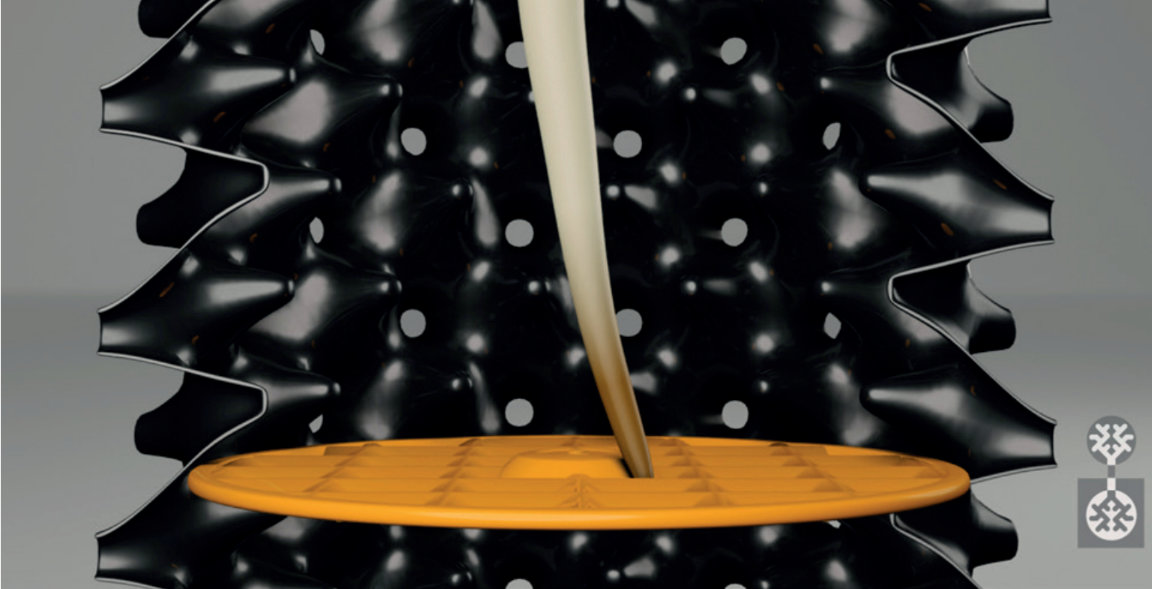
copyright © The Caledonian Tree Co. Ltd
Each of the lateral roots is then steered by the shape of the wall towards an air hole, where it is also air-pruned, causing yet more branching.
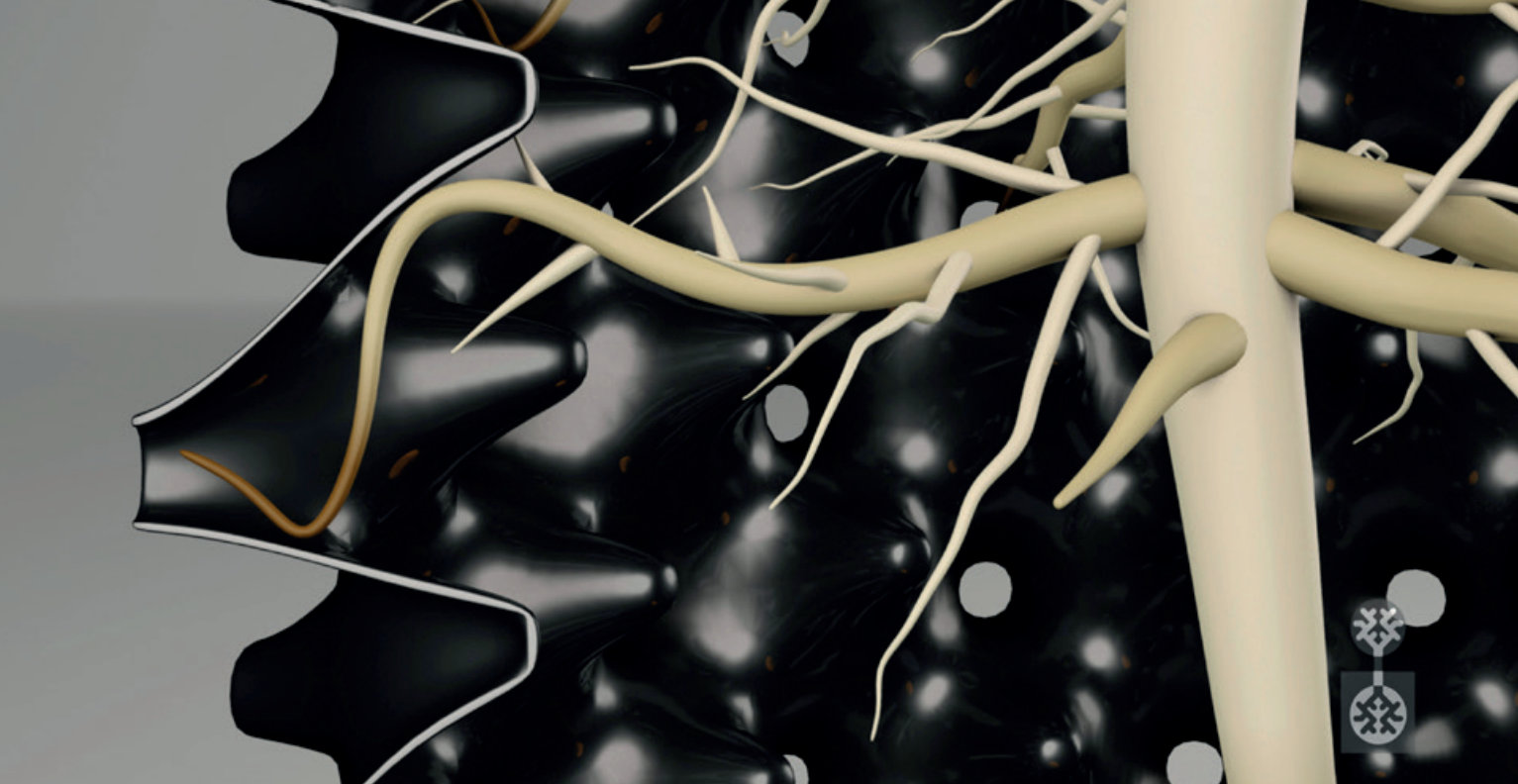
copyright © The Caledonian Tree Co. Ltd
The process is continually repeated until the plant has developed a dense mass of fibrous roots. This amazing root structure leads to increased take up of nutrients and water, faster growth, and healthier trees.
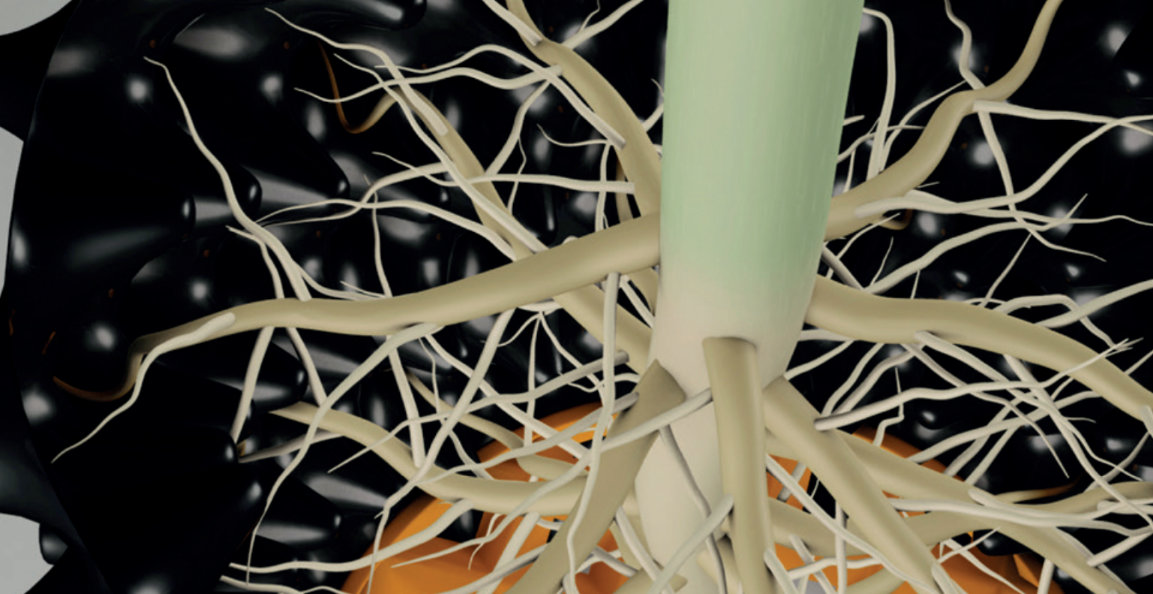
copyright © The Caledonian Tree Co. Ltd
Air-Pot® containers are the original and the best air-pruning containers around, and have been made in Scotland, UK from recycled plastic since 1997. They are UV-stabilised and last many years in our harsh Australian climate — I can attest to that!
The Air-Pot system is highly-regarded by gardeners and horticultural experts worldwide for the superior and dense root systems they develop — see how they work via the diagrams and videos below.
Our complete Air-Pot® range is here.
The Air-Pot System in Diagrams
All text and images are copyright © The Caledonian Tree Co. Ltd
When the tap root reaches the base, increased air in the growing medium dehydrates the tip, pruning it and stimulating lateral root branching.

copyright © The Caledonian Tree Co. Ltd
Each of the lateral roots is then steered by the shape of the wall towards an air hole, where it is also air-pruned, causing yet more branching.

copyright © The Caledonian Tree Co. Ltd
The process is continually repeated until the plant has developed a dense mass of fibrous roots. This amazing root structure leads to increased take up of nutrients and water, faster growth, and healthier trees.

copyright © The Caledonian Tree Co. Ltd
The Air-Pot System in Videos
Getting seeds off to a great start:
copyright © The Caledonian Tree Co. Ltd
A demonstration of air-pruning in action:
copyright © The Caledonian Tree Co. Ltd
How to assemble and fill an Air-Pot container:
copyright © The Caledonian Tree Co. Ltd
More on assembling and filling an Air-Pot container:
copyright © The Caledonian Tree Co. Ltd
How to assemble and fill an Air-Pot wall:
Please note the use of pallets or solid concrete acting as a base/barrier to prevent roots going through into the ground. Plastic pallets and weed mat can also be used — though please note that the roots of some species will punch right through weed mat given time.
copyright © The Caledonian Tree Co. Ltd
Potting up a chilli plant:
copyright © The Caledonian Tree Co. Ltd

